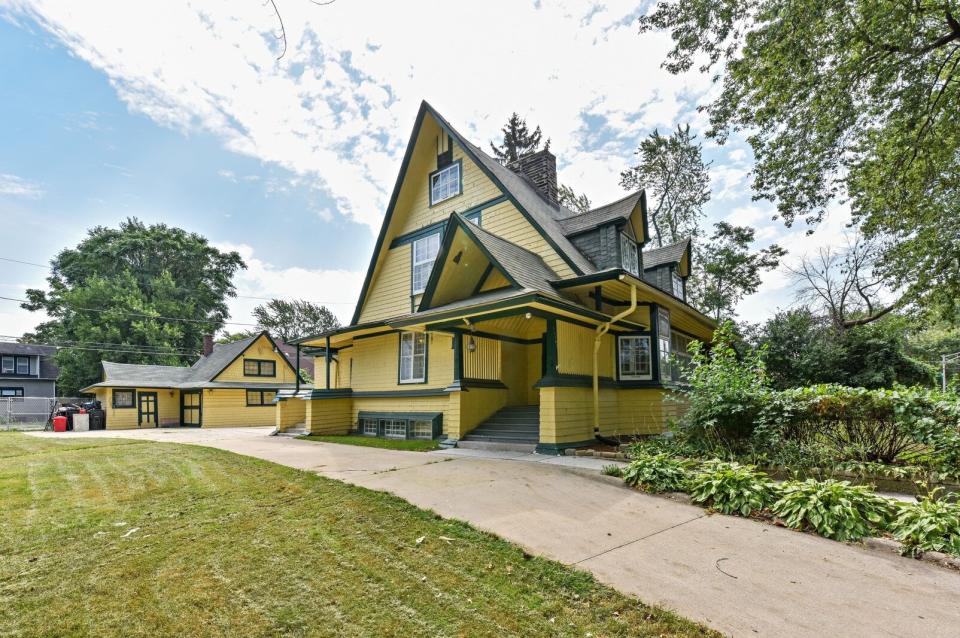You Could Own a Rare Frank Lloyd Wright House for $175,000

- Oops!Something went wrong.Please try again later.
Frank Lloyd Wright is known for his "prairie-style" structures, including Fallingwater in rural southwestern Pennsylvania and The Guggenheim Museum in New York City. Now, a rare property designed by the world-famous architect could be yours for just $175,000. Built in 1900, the home was built for a prominent real estate family as a summer retreat.

Courtesy of Coldwell Banker
The Chicago, Illinois, home, which was listed by Coldwell Banker, features five bedrooms, three bathrooms, a large front porch, and a two-car garage. The 2,408 square foot, canary yellow property doesn't necessarily reflect his other designs; this one is Japanese-inspired. "The dramatic, outward flare of the ridges on the roof and dormers evoke Japanese architecture and lends variety and dynamism to this otherwise conservative design," reads a description from the Frank Lloyd Wright Trust. In the late 19th and early 20th century, Wright was introduced to the Japanese woodblock print, which would become a major influence in his design aesthetic. According to his foundation, Wright called Japan "the most romantic, artistic, nature-inspired country on earth."
Related: Frank Lloyd Wright Turns 150—Hit the Road to Celebrate the Famed Architect
According to Architectural Digest, the home initially went on the market for $205,000 in 2017 but has received three price cuts. While the low asking price could allow buyers to renovate the interior to their liking, it was declared a Chicago landmark in 1996, which means that changes cannot be made without approval from the city.
If you have a sky-is-the-limit budget, seven additional properties designed by Wright are also on the market, according to Curbed. The most extravagant listing, which has an asking price of $9,999,999, is The David and Gladys Wright House in Phoenix, Arizona, which is considered to be a precursor to the Guggenheim.

